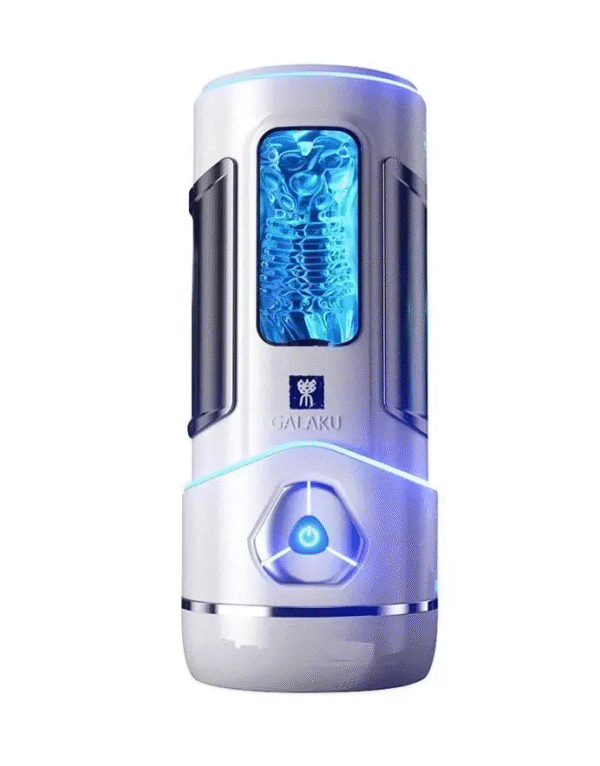The Twisty Revolution: How Ergonomic Design is Redefining Male Performance Enhancement
The world of male sexual wellness continues to evolve, driven by advances in materials science, ergonomic design, and a deeper understanding of human anatomy. While traditional cock rings have served their purpose for decades, innovative designs like the PeakBody Twisty Cock Ring represent a quantum leap forward in both comfort and effectiveness. This twisted design isn’t merely an aesthetic choice – it’s a carefully engineered solution that addresses the limitations of conventional straight designs while maximizing user comfort and performance benefits.
Understanding why the twisted configuration has gained popularity among men seeking performance enhancement requires examining both the biomechanical principles behind its function and the real-world advantages it provides. Unlike traditional designs that can create pressure points and discomfort, the twisted shape distributes force more naturally, working with your body’s anatomy rather than against it.
The Science Behind Ergonomic Performance Enhancement
The human body rarely operates in perfectly straight lines or simple geometric shapes. Natural anatomy includes curves, variations in circumference, and subtle asymmetries that traditional rigid designs often fail to accommodate. The twisted design of the Twisty Cock Ring acknowledges these realities and works with them rather than trying to impose a one-size-fits-all solution.
When examining the mechanics of how cock rings function, we see that effective performance enhancement depends on applying gentle, consistent pressure to support blood flow while maintaining comfort. Traditional straight designs can create uneven pressure distribution, leading to hot spots, discomfort, or reduced effectiveness. The twisted configuration addresses these issues through its spiral geometry.
Biomechanical Advantages of Twisted Design
The spiral shape creates multiple contact points that distribute pressure more evenly across the surface area. This distributed loading reduces peak stresses and eliminates the pressure concentrations that can cause discomfort with traditional designs. The result is a more comfortable experience that can be maintained for longer periods without fatigue or irritation.
The twisted geometry also provides inherent flexibility that allows the ring to adapt to natural anatomical variations. Where straight designs might bind or create uncomfortable pressure points, the twisted shape flexes and conforms, maintaining consistent performance across different anatomies and situations.
Enhanced Blood Flow Management
The spiral configuration creates a more sophisticated approach to blood flow management than traditional designs. Rather than creating a single constriction point, the twisted shape provides graduated pressure that can help maintain optimal blood flow while reducing the risk of over-constriction. This nuanced approach often leads to better performance outcomes with increased comfort.
Material Innovation Meets Ergonomic Design
The effectiveness of the twisted design is amplified by its construction from premium medical-grade silicone. This material choice isn’t just about safety – it directly impacts how well the ergonomic design functions in real-world use.
Memory and Flexibility Properties
Medical-grade silicone possesses unique memory properties that allow it to flex and adapt while returning to its original shape. In the twisted design, this means the spiral configuration maintains its effectiveness even under stress, while providing the flexibility needed to accommodate anatomical variations.
The material’s flexibility is particularly important for the twisted design because it allows the spiral geometry to work as intended. A rigid material would defeat the purpose of the ergonomic shape, while inferior flexible materials might lose their shape over time. Medical-grade silicone provides the perfect balance.
Surface Properties and Comfort
The smooth surface finish of medical-grade silicone eliminates friction points that could cause irritation during use. Combined with the twisted shape’s even pressure distribution, this creates an exceptionally comfortable experience that many users find superior to traditional designs.
The non-porous nature of the material also means it won’t harbor bacteria or develop odors, maintaining hygiene standards that are crucial for intimate products. This is particularly important for reusable designs where long-term cleanliness affects both safety and user experience.
Addressing Common Performance Concerns Through Design Innovation
The twisted design excels at addressing several performance concerns that affect many men, often providing solutions that traditional designs struggle to deliver effectively.
Comfort During Extended Use
One of the most common complaints about traditional cock rings is discomfort during longer sessions. The twisted design addresses this through its distributed pressure approach, eliminating the hot spots and pressure concentrations that cause discomfort. Users frequently report being able to wear the twisted design for the full recommended duration without the fatigue or irritation experienced with other products.
This comfort advantage directly translates to better performance outcomes. When you’re not distracted by discomfort or worried about removing the device prematurely, you can focus on enjoying the experience and benefiting from the performance enhancement.
Adaptive Fit for Different Anatomies
Every man’s anatomy is slightly different, and what works perfectly for one person might be uncomfortable for another. The twisted design’s inherent flexibility allows it to adapt to these variations automatically. The spiral geometry flexes and conforms to individual anatomy, providing a customized fit without requiring multiple sizes or complex adjustments.
This adaptability is particularly valuable for men who have found traditional designs either too tight or too loose. The twisted shape can accommodate a wider range of sizes while maintaining effectiveness, making it an excellent choice for men who have struggled to find properly fitting traditional rings.
Enhanced Stability and Security
The twisted geometry provides superior stability compared to straight designs. The spiral shape naturally resists rolling or shifting during use, maintaining optimal positioning throughout intimate encounters. This stability ensures consistent performance benefits and reduces the need for interruptions to readjust or reposition the device.
The Psychology of Performance Enhancement
Beyond the physical benefits, the twisted design offers psychological advantages that can be equally important for overall sexual wellness. The confidence that comes from using a well-designed, comfortable product often translates into better performance and increased satisfaction.
Reduced Performance Anxiety
When men feel confident that their enhancement device will work effectively and comfortably, it eliminates one potential source of performance anxiety. The twisted design’s proven comfort and effectiveness help create this confidence, allowing users to focus on enjoyment rather than worrying about their equipment.
Enhanced Self-Image
The sleek, modern appearance of the twisted design can contribute to positive self-image and confidence. While function is paramount, the aesthetic appeal of a well-designed product shouldn’t be underestimated in its psychological impact.
Partner Considerations
Partners often appreciate the enhanced performance and increased confidence that comes from effective enhancement devices. The twisted design’s comfort benefits extend to partners as well, as the smooth surface and ergonomic shape reduce the likelihood of irritation or discomfort during intimate contact.
Practical Usage and Optimization Strategies
Getting the most from the twisted design requires understanding how to properly use and optimize its unique features. While the ergonomic benefits are largely automatic, there are techniques that can maximize effectiveness.
Proper Application Techniques
The twisted design should be applied when partially erect, allowing the spiral geometry to position itself optimally as arousal increases. The flexible nature of the design means it will adapt and conform as needed, but starting with proper positioning ensures maximum effectiveness.
Unlike rigid designs that require precise placement, the twisted configuration is more forgiving and will naturally find its optimal position. This ease of use is particularly appreciated by men new to performance enhancement devices.
Optimization for Different Situations
The adaptability of the twisted design makes it suitable for various intimate situations. Whether you’re seeking enhanced endurance, improved firmness, or better control over timing, the spiral geometry provides consistent benefits across different scenarios.
The design’s comfort advantages make it particularly well-suited for longer sessions where traditional devices might become uncomfortable. This versatility makes it an excellent all-around choice for men with varying needs and preferences.
Maintenance and Longevity
The twisted shape requires slightly different cleaning techniques than straight designs. The spiral geometry may require gentle manipulation during cleaning to ensure all surfaces are properly sanitized. However, the medical-grade silicone construction makes this process straightforward and ensures the device maintains its properties over extended use.
Proper care will ensure the twisted design maintains its flexibility and effectiveness for years of use. The durable construction and high-quality materials make it a long-term investment in sexual wellness.
Comparing Design Approaches: Why Ergonomics Matter
When evaluating performance enhancement options, it’s helpful to understand how different design approaches affect user experience and outcomes. The twisted design represents a significant advancement over both traditional straight designs and other alternative configurations.
Traditional Straight Designs
Conventional cock rings rely on simple circular geometry that can create uneven pressure distribution and limited adaptability. While functional, they often sacrifice comfort for simplicity and may not accommodate anatomical variations effectively.
Other Alternative Designs
Various manufacturers have experimented with different shapes and configurations, but few have achieved the optimal balance of comfort, effectiveness, and adaptability found in the twisted design. The spiral geometry represents years of development and refinement.
The Twisted Advantage
The twisted design combines the effectiveness of traditional concepts with modern ergonomic principles and advanced materials. The result is a product that delivers superior performance while maintaining exceptional comfort and adaptability.
$10.00 Original price was: $10.00.$5.00Current price is: $5.00.
Economic Value and Long-Term Benefits
At $10.00, the PeakBody Twisty Cock Ring represents exceptional value in the performance enhancement market. When evaluating the economic benefits, it’s important to consider both immediate value and long-term advantages.
Cost-Effectiveness Analysis
Compared to pharmaceutical approaches that can cost hundreds of dollars annually, the twisted design provides lasting value with a single purchase. The reusable nature and durable construction mean the cost per use becomes minimal over time.
Professional therapy or medical interventions can cost thousands of dollars and may not address the specific concerns that performance enhancement devices target. The twisted design provides an accessible, effective alternative that many men find sufficient for their needs.
Long-Term Value Proposition
The high-quality construction and advanced design of the twisted cock ring ensure it will remain effective for years with proper care. This longevity multiplies the value proposition significantly, making it one of the most cost-effective investments available in sexual wellness.
The confidence and performance benefits provided often have value that extends beyond the monetary cost. Improved intimate relationships, increased self-confidence, and reduced performance anxiety can positively impact multiple aspects of life.
Integration with Comprehensive Sexual Health
The twisted design works best as part of a holistic approach to sexual wellness that addresses physical health, mental wellbeing, and relationship dynamics. Understanding this context helps maximize the benefits of any performance enhancement device.
Physical Health Foundation
Cardiovascular health, regular exercise, proper nutrition, and adequate sleep all contribute to sexual performance. The twisted design amplifies the benefits of good overall health while providing additional support where needed.
Mental Health Considerations
Performance anxiety can create self-reinforcing cycles that worsen sexual concerns. The confidence boost provided by effective, comfortable enhancement can help break these cycles, though addressing underlying anxiety through stress management or professional counseling may also be beneficial.
Relationship Communication
Open communication with partners about sexual wellness, preferences, and concerns often leads to better outcomes for everyone involved. The twisted design can be part of these conversations, contributing to improved intimacy and satisfaction.
Future Directions in Ergonomic Design
The twisted design represents current innovation in performance enhancement, but it’s likely part of an ongoing evolution toward more sophisticated, user-friendly solutions. Understanding emerging trends helps put current options in perspective.
Materials Advancement
Future developments may include smart materials that respond to temperature or pressure, biocompatible materials with enhanced properties, or sustainable materials that maintain performance while reducing environmental impact.
Design Evolution
Ergonomic principles will likely continue driving design innovation, with even more sophisticated shapes and configurations that further optimize comfort and effectiveness. However, the fundamental principles demonstrated by the twisted design will remain relevant.
Personalization Trends
Future products may offer greater customization options, allowing users to fine-tune their experience based on individual anatomy and preferences. The twisted design’s inherent adaptability positions it well for these developments.
Conclusion: Embracing Ergonomic Innovation
The PeakBody Twisty Cock Ring represents a significant advancement in performance enhancement technology, demonstrating how thoughtful design can dramatically improve user experience while maintaining effectiveness. The twisted configuration addresses longstanding issues with traditional designs while providing benefits that extend beyond simple functionality.
For men seeking reliable, comfortable performance enhancement, the twisted design offers a compelling combination of innovation, effectiveness, and value. Its ergonomic principles ensure it works with your body’s natural anatomy rather than against it, providing superior comfort that enables you to fully benefit from its performance-enhancing properties.
The modest $10.00 investment provides access to advanced ergonomic design that can deliver benefits far exceeding its cost. When you consider the potential improvements in comfort, performance, confidence, and overall sexual satisfaction, the twisted cock ring represents one of the most cost-effective innovations available in male sexual wellness.
As the field of sexual wellness continues to evolve, products like the twisted design point toward a future where effectiveness and comfort are no longer competing priorities. By choosing innovative, well-designed products that prioritize user experience alongside performance, you’re investing in a approach to sexual wellness that recognizes the importance of both physical and psychological comfort.
The path to better sexual performance doesn’t require sacrificing comfort or settling for outdated designs. The twisted configuration proves that with thoughtful engineering and quality materials, it’s possible to achieve superior results while actually improving the user experience. This represents the kind of innovation that transforms how we think about performance enhancement – not as a compromise or trade-off, but as an enhancement in every sense of the word.
















